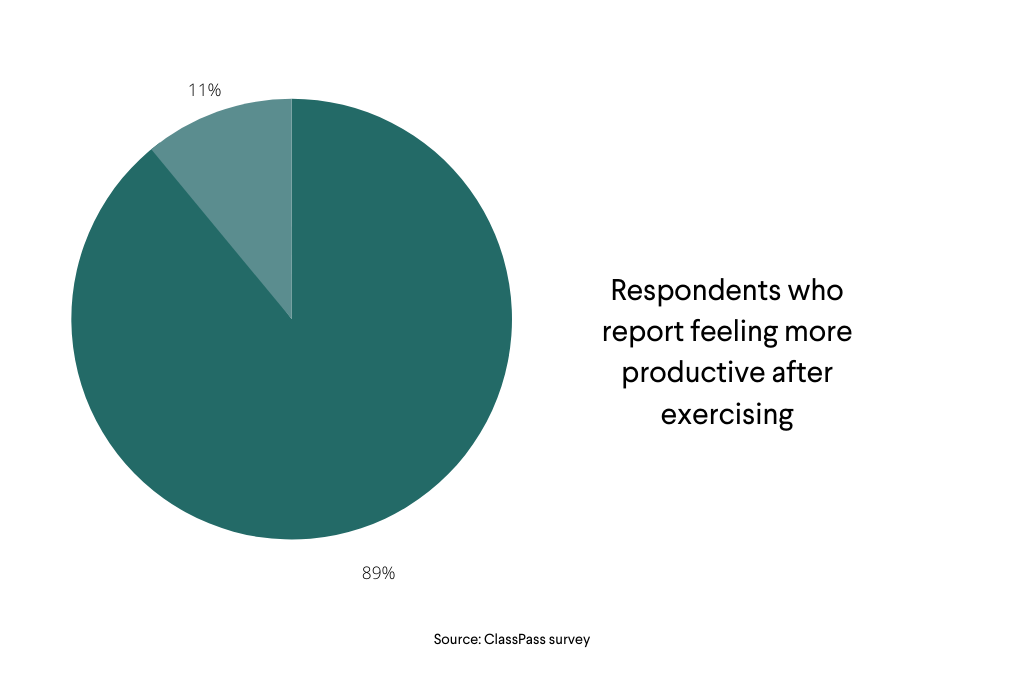Employee burnout is work-specific stress that includes physical and emotional exhaustion, as well as a feeling that what you’re doing doesn’t matter. Physical symptoms include anxiety, stomach issues, headaches, and fatigue. Along with energy levels, productivity and work quality drops, too.
During the COVID-19 pandemic, surveys show that remote workers are particularly prone to burnout symptoms. Sixty-nine percent of people working from home during COVID-19 are experiencing burnout, according to a survey from Monster.
When burnout isn’t addressed, it can lead to high employee turnover – 50% of HR leaders cite burnout as a top reason employees leave their company. But whether your employees are working remotely or not, there are several ways HR teams can equip managers and employees to help everyone feel supported.
1. Train your staff on how to recognize the signs of employee burnout.
The first step in preventing and addressing employee burnout is to recognize the signs and symptoms in the first place. Is your normally optimistic employee making more snide comments lately? Has their work quality decreased? Do they seem tired all the time, even while downing their third mug of coffee? Fatigue, negative feelings and cynicism, and reduced work quality are all signs of burnout, according to the World Health Organization.
Burnout is typically caused by specific workplace stressors, including:
- Unclear requirements
- Lack of control
- Constant “crunch time”
- Lack of recognition
- Poor communication
Employees experiencing burnout feel like they can’t take a break – and aren’t getting recognized for the nonstop work they do. Unclear requirements and lack of communication can also contribute to employees feeling lost and disconnected from their work.
Provide training to managers as well as non-managerial staff about the causes and consequences of employee burnout, including clues to watch for. Consider providing separate training for managers and non-managers to help make employees feel more comfortable sharing questions.
When managers spot the signs of burnout, experts recommend having a compassionate conversation about workload that avoids criticism. Ask for what they need to feel supported and successful, and find a way to loosen deadlines and provide additional support when possible.
Of course, managers deal with burnout, too. Model healthy boundaries, positivity, and teamwork, and show your team that you’re there for them.
2. Provide employee wellness benefits that combat stress.
Because burnout impacts both mental and physical health, wellness benefits that address both can make a significant impact. Employee benefits that are easily accessible from home can also help address issues as they come up, and prevent them from getting worse, whether employees are working remotely or not.
Musculoskeletal conditions, for example, are closely linked to job stress. Perpetually tense muscles, feeling too exhausted to exercise, and getting into negative thought loops about pain and stress can all cause or exacerbate chronic MSK pain.
Because of the close relationship between psychological factors like stress and anxiety and physical factors, research shows that musculoskeletal programs that address both the physical and mental sides of pain are more effective than programs focusing only on the physical side pain. That’s why the Fern program is rooted in pain neuroscience education – a behavioral approach created specifically for chronic pain.
Mental health benefits and fitness reimbursements that work for home are important, too. Encourage employees to fit in a short workout during the day – 89% of respondents in a survey said they feel more productive after exercising. Flexibility in the workday is also linked to less stress and employee burnout.

3. Create meeting-free time blocks across the company.
Have you ever felt like you haven’t had time to get your work done during the workday? Sixty-seven percent of workers say that excessive meetings keep them from being as productive as they’d like. One solution to try are meeting-free time blocks – or even whole days – promoted as a rule across the company. For remote workers, these time blocks offer a welcome chance to take a purposeful break to have a meal or exercise. For parents with young children at home, these time blocks can provide a helpful break to help with remote schooling.
Other ways to create healthy boundaries include turning off email and instant message notifications in the evening and on the weekend – and encouraging team members to do the same.

4. Provide a training budget – and encourage employees to use it.
Continuing education and training can reinvigorate an employee’s connection to their role and optimism for the future. In one study, 81% of respondents agreed that their employer’s tuition assistance program makes them more likely to stay with their company.
Learning something new can help employees feel more confident and energized when starting new projects.
5. Offer a change in routine.
Another way to address employee burnout is to help employees shake up their daily routine. For example, your marketing team can consider soliciting guest blog posts from others on the team, or a sales person who’s generally client-facing could work on a research project.
Have an open conversation with top performers on your team who might be feeling overwhelmed, and would appreciate support they don’t always receive.
Collaboration with different teams is another way to help employees feel more socially connected, and better share workloads.
The value of addressing employee burnout
Addressing workplace burnout, whether the workplace is at home or not, improves employee mental and physical health. Companies that recognize their employees as people and respect boundaries benefit from happier, more productive teams, too.
Ready to reduce employee stress and address chronic musculoskeletal pain costs at your company? Get in touch using the form below.






